Sofrito is the heart and soul of Caribbean cuisine and the knock-out flavor base of many of its dishes. It’s budget-friendly, easy to make, and my favorite way to add a little magic to almost any savory recipe. If you want to kick up your cooking prowess a hundred notches with just one technique, THIS IS IT.
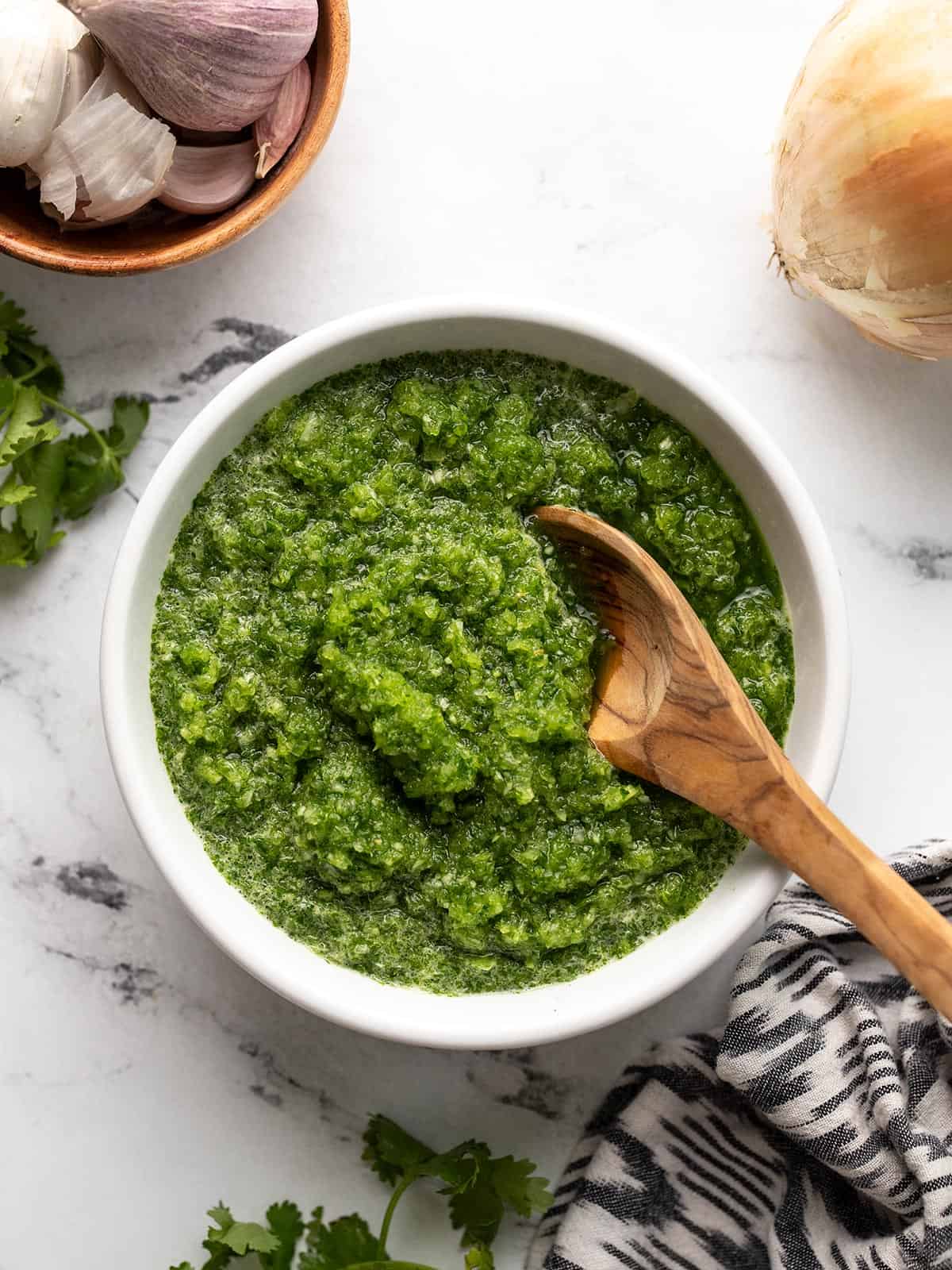
All recipes are rigorously tested in our Nashville Test Kitchen to ensure they are easy, affordable, and delicious.
“I cook mostly Mexican food. This sofrito recipe is one of my essential ingredients. Cilantro, green bell pepper and garlic mixed together are a great base. Adding some fresh tomato to this mix enhances it. Note: the garlic in this recipe doesn’t burn when heated along with the other ingredients. I highly recommend it.”
Gilbert
Easy Sofrito Recipe
Sofrito originated in Spain, and the word refers to a technique where you fry aromatics to release flavor compounds. The sauce took on different forms as the Spanish colonized the Caribbean, and islanders recreated it with available ingredients. In Puerto Rico, where I was born and raised, this sauce is called recaito, after recao, an herb that grows wild throughout the island and gives the puree its distinctive bright green color. This Puerto Rican variation is what my recipe is based on.
Sofrito is a blend of aromatics like peppers, onions, garlic, and herbs—kind of like the Latin version of mirepoix or the holy trinity. Except it’s as easy as tossing everything in a blender or food processor (or going old-school and mincing by hand). Recipes vary from family to family and can depend on the region, but no matter what’s in it, it’s almost always the first thing to hit the pan, where it’s lightly fried until your kitchen smells like heaven. Seriously, I’ve seen many islanders get choked up at the first whiff of sofrito. TRUST ME. This sauce is powerful stuff.
A Note On Authenticity
This isn’t a historically authentic recipe, but it’s designed to be budget-friendly and accessible to everyone. I create recipes using ingredients you can find at a typical grocery store and test them with the goal of keeping steps, tools, and costs to a minimum while still honoring the spirit and flavor of the original dish. I was born and raised in Puerto Rico, and I truly look forward to the day when traditional ingredients are easier to find in mainstream markets. Until then, buen provecho!
Puerto Rican Sofrito
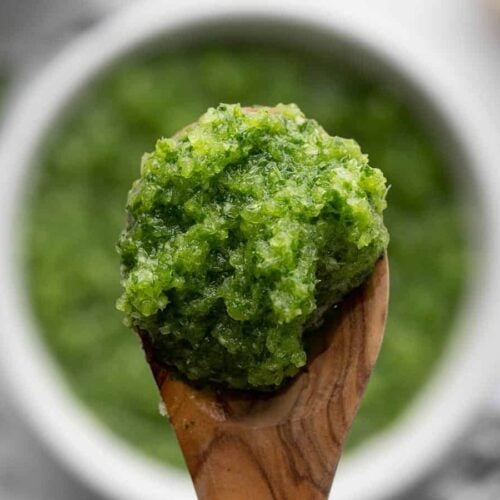
Ingredients
- 1 yellow onion ($0.70)
- 1 green bell pepper ($0.86)
- 1 bunch fresh cilantro ($0.89)
- 6 cloves garlic ($0.24)
Instructions
- Peel the onion and deseed bell pepper, then quarter them. Rinse the cilantro and chop the bunch roughly.
- Add the onion, bell pepper, cilantro, and garlic to the bowl of a food processor. Pulse until a smooth, thick puree forms.
- Use in a recipe immediately, store in an air-tight container for up to a month in the fridge, or portion into ice cube trays and store in the freezer for up to three months.
See how we calculate recipe costs here.
Nutrition
How to Make Puerto Rican Sofrito Step-by-Step Photos
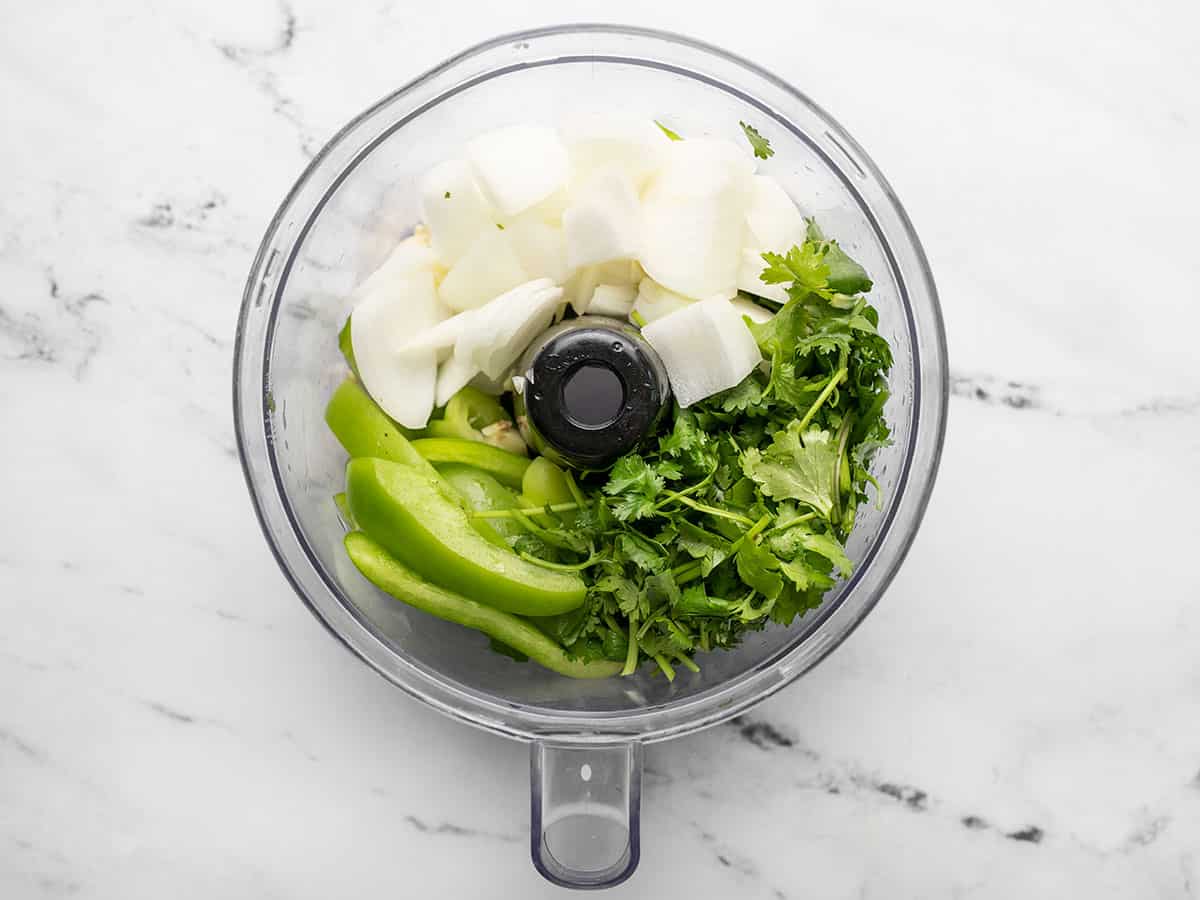
Add everything to a food processor: Prep and quarter 1 yellow onion and 1 green bell pepper. Rinse and chop the 1 bunch of cilantro. Add the onion, bell pepper, cilantro, and 6 garlic cloves to the bowl of a food processor or blender.
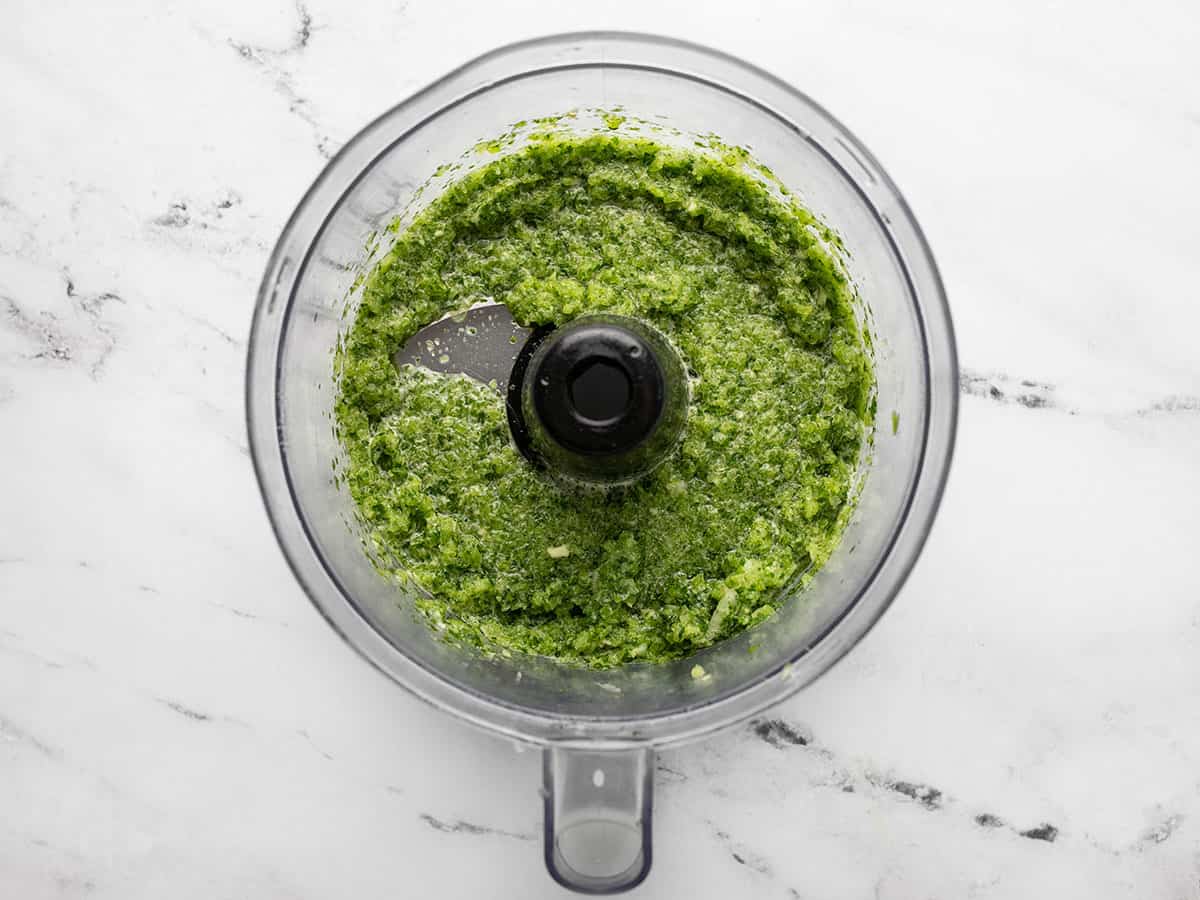
Blend: Pulse until the ingredients transform into a smooth, thick puree. If the blades get stuck cutting through the ingredients, add a little olive oil to move things along.
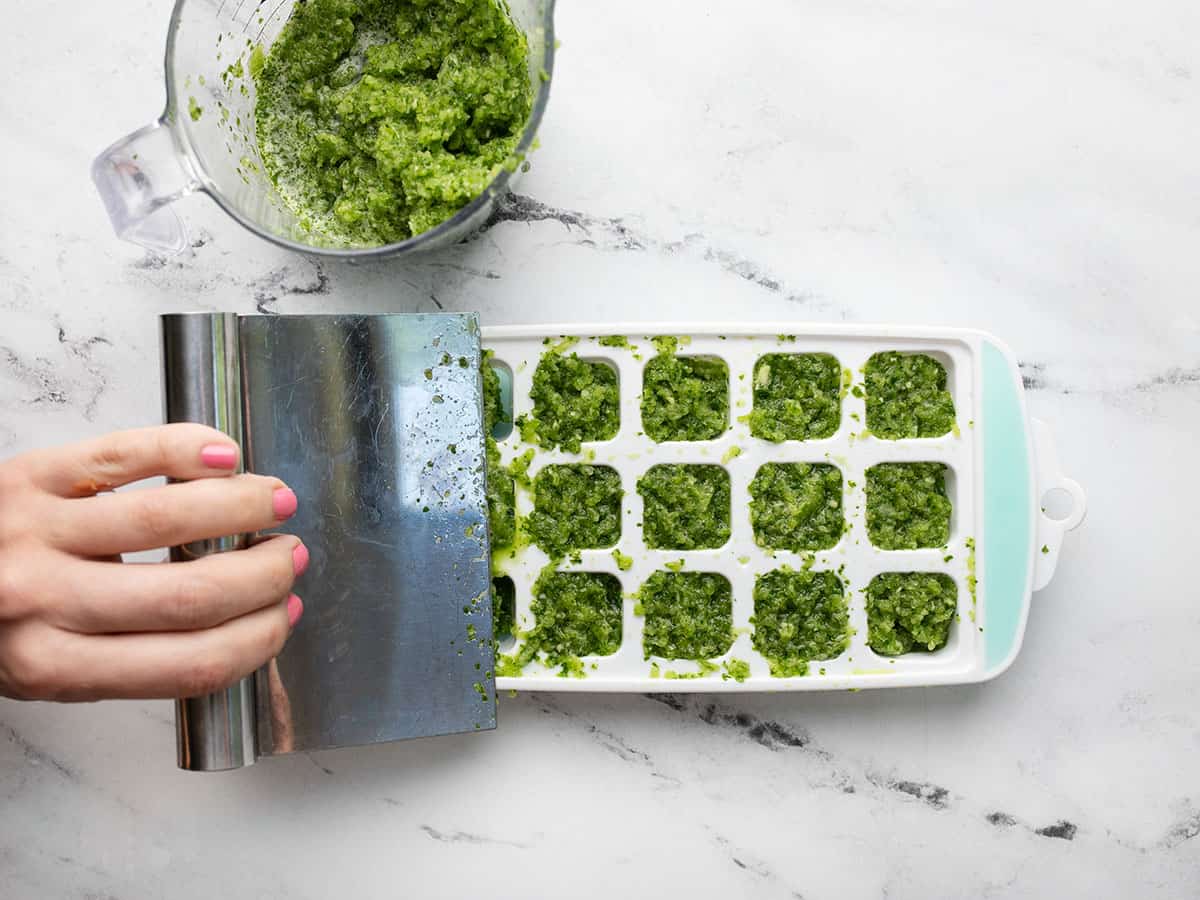
Use or store: You can use it immediately, store in an air-tight container in the fridge for about 2 weeks or portion into an ice cube tray and freeze. Place the cubes into a freezer-safe container and store for up to three months.
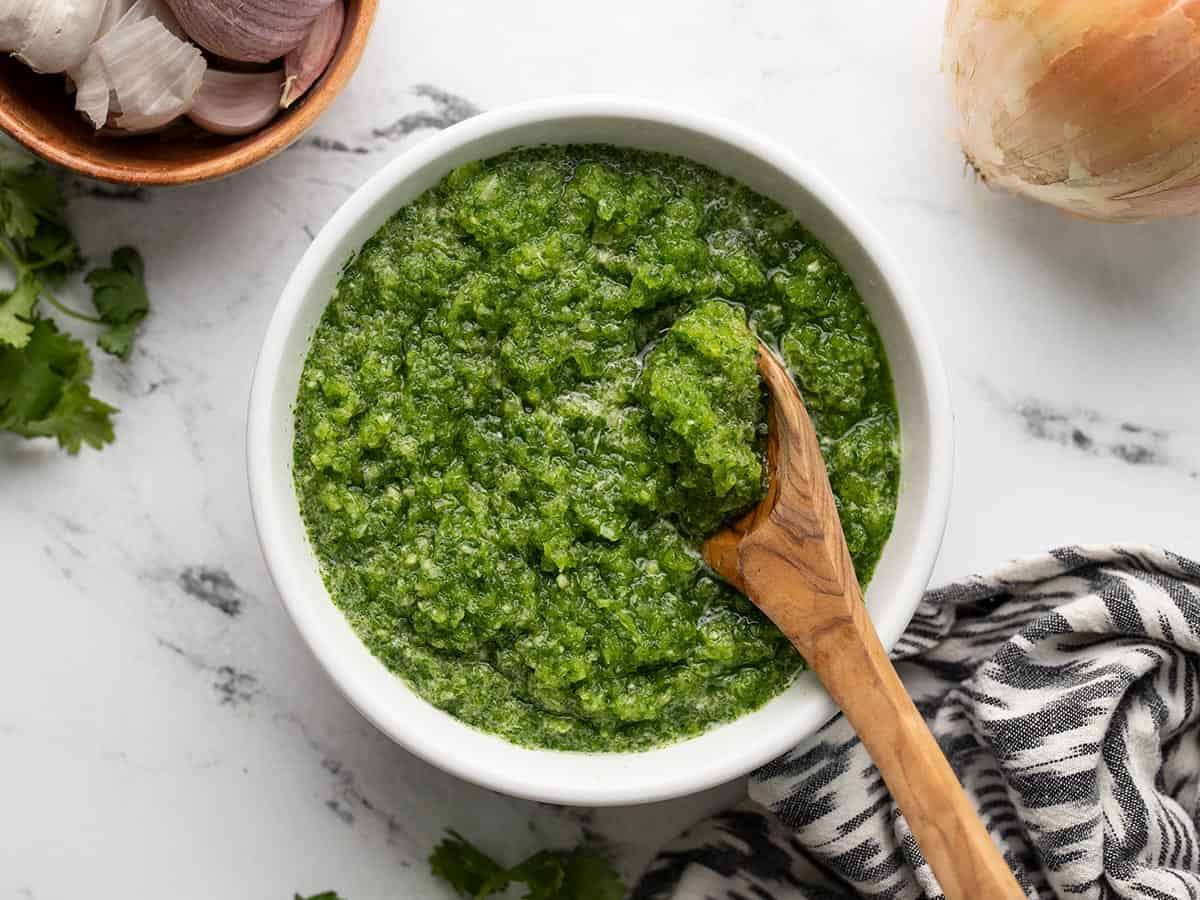
Different Variations!
The ingredient list for sofrito changes depending on the region. In Spain, the sauce includes tomatoes; in the Dominican Republic, it contains vinegar; in Puerto Rico, neither of those ingredients made the cut.
Traditionally, Boricuas (i.e., Puerto Ricans) make it with cubanelle peppers, a sweet pepper known as ají dulce, garlic, onion, and, as I mentioned earlier, recao. This pungent herb is a distant relative of cilantro and is also known as culantro, Chinese parsley, or sawtooth coriander. You can usually find cubanelle peppers, ají dulce, and recao at an Asian or Latino supermarket. When I can’t find these traditional ingredients, I sub them with green bell pepper and cilantro (as seen in this recipe). Some recipes also use annatto oil, salt pork, tomato sauce, and additional herbs and spices.
How is Sofrito Used?
Honestly, many savory recipes would benefit from a few tablespoons of this delicious mix. Of course, it’s imperative that you use it in the Caribbean dishes, like my recipe for Arroz con Pollo (Puerto Rican chicken and rice). But you should also try it in your favorite stews, soups, beans, and sauces. For example, a few tablespoons would be spectacular in this easy chili, this hearty vegetable barley soup, or this dreamy Spanish chickpeas and rice.
How to Store
A little sofrito goes a long way, so you’ll always have leftovers when you make a batch. Store it in an airtight container in your fridge for up to a month. Or do like every abuela (Spanish for grandma) does on the island: freeze any leftovers in an ice cube tray. Then transfer the cubes to a freezer-safe container, where they will stay fresh for up to three months.


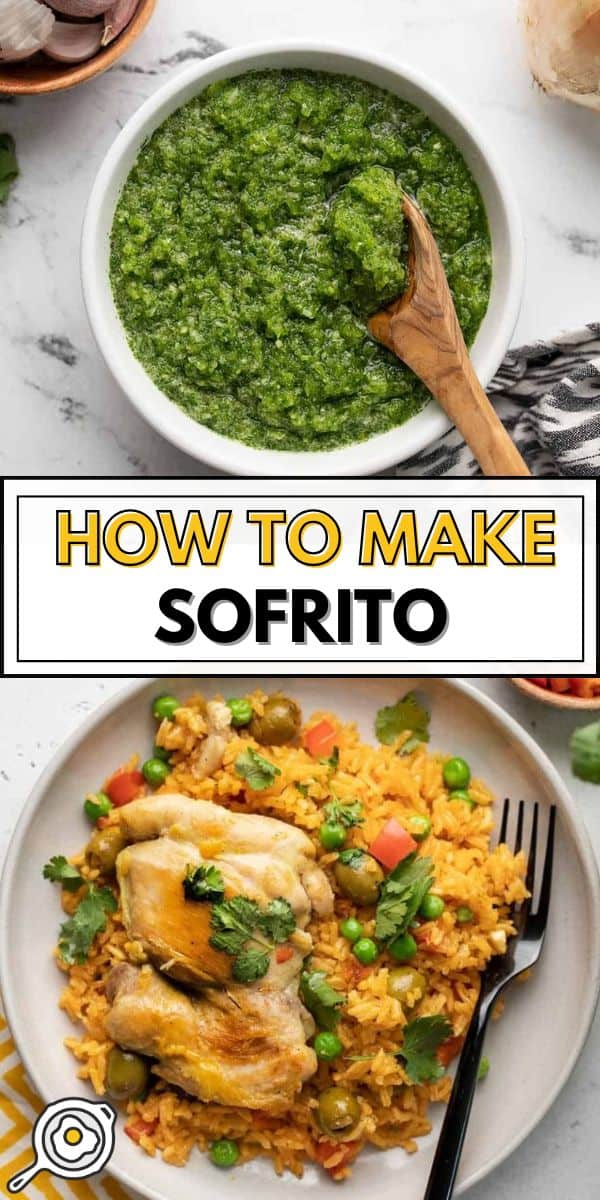
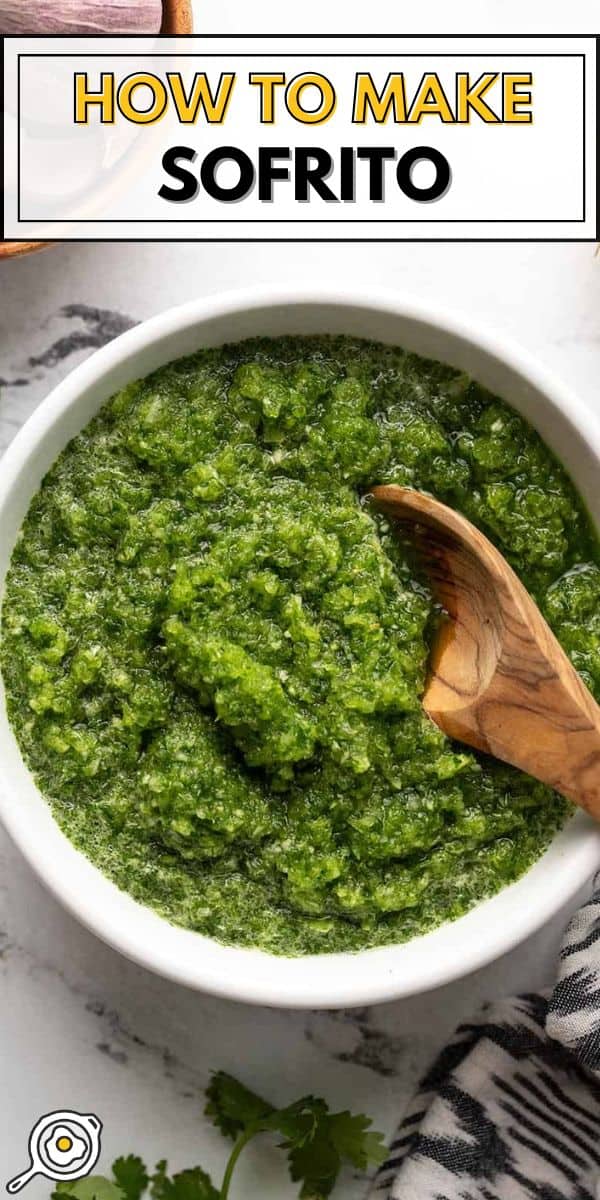


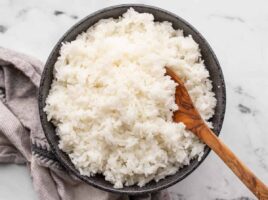

You forgot to add what most Puerto Ricans absolutely positively add to their sofrito. You need culantro. It’s not sofrito without culantro.
This is missing ingredients
Red,green, Italian, sweet (aji )peppers
Cilantro
Recao
Garlic
Onions
Pinch of salt & 2 tbsp olive oil (optional) incase ingredients get stuck ( no water)
Amount of each ingredients depends how much you want to make. ENJOY
Great help
Where is half the ingredients? This doesn’t even have culabntro? Or the ajices dulce?
Thank you for providing a way to make a good sofrito given the typical grocery store ingredients. I’ve just moved to a city with a large Puerto Rican population and now I can continue to explore this cuisine.
The last recipe is the one I grew up learning and still make it , tried store bought yuck!
I cook mostly Mexican food. This sofrito recipe is one of my essential ingredients. Cilantro, green bell pepper and garlic mixed together are a great base. Adding some fresh tomato to this mix enhances it. Note: the garlic in this recipe doesn’t burn when heated along with the other ingredients. I highly recommend it
Thanks Gilbert!
Thanks for All receipts.
Today especially for varieties of Sofrito.
(In today’s shopping, 1 Green Pepper costs $1. – $3. Ea, depending on the store. I won’t buy.)
Recao is an herb used in sofrito a long with cilantrillo. In PR sofrito is called sofrito not recaito.
Hi Roson! Are you Boricua too? Love it! So sofrito starts with recaito and when you add tomatoes, annatto oil, and salt pork, etc, and fry it, that’s when it becomes sofrito. Sofrito originated in Spain and means “to fry” or. “a fried sauce”. I was taught that lesson by Chef Giovanna Huyke, Puerto Rico’s Julia Child. She is an encyclopedia when it comes to our cuisine. Thanks for being here!
Recipe sounds good I always wanted make different recipes. Can’t wait to try this one. Do you have more please send.
Thank you for this! We currently live in an area with lots of Latin grocery stores but will be moving to a different part of the country with little to none. I’m excited to try this and would love more Puerto Rican and Cuban recipes!
An international grocery store opened near me, and they have culantro! And cubanelles! Here’s hoping the anti-cilantro gene doesn’t apply to culantro!
I can’t food process/blend. Will chopping be good enough and store as well? Thanks.
Hi, there! While a food processor or blender is the easiest way to achieve the correct texture of sofrito, you can also achieve it manually with more time and elbow grease. Either by finely mincing with a chef’s knife or using a mortar/pestle. A masher/ricer/garlic press might also help. I think it should keep as long if stored in a totally air-tight container and freeze just as well. ~ Marion :)
Why do you use cilantro instead of culantro? This recipes is super simple compared to what I usually do. Think I will use it and add tomatoes for when I made habicuelas guisadas.
Hi, there! Monti explains her reasoning for that change in the section “A NOTE ON AUTHENTICITY.” If you have culantro and prefer to use it, you totally should! For many readers, it is a bit of an unfamiliar product and difficult to source. ~Marion :)